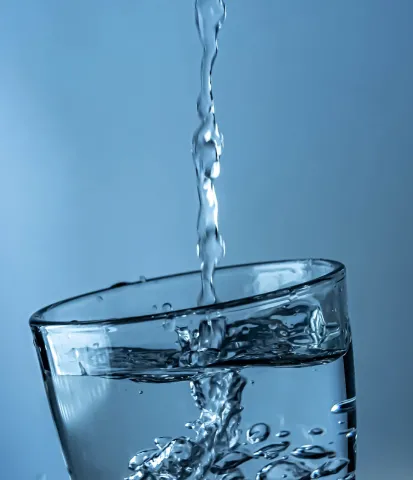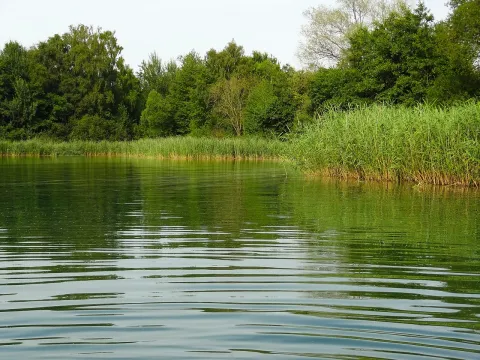Water Quality
Water quality refers to water's physical, chemical, and biological characteristics. It is a measure of the condition of water relative to the requirements of one or more biotic species and or to any human need or purpose. Good water quality is essential for human health, food production, and ecosystem health. Maintaining high water quality in urban areas is crucial due to the high population density. Poor water quality can lead to the spread of waterborne diseases and loss of biodiversity, and it can impact the aesthetics and recreational potential of urban areas. Assessing water quality involves measuring multiple parameters to ensure that water meets the required standards for its intended use.
Some Water Quality issues in SoCal
1. Urban Runoff and stormwater pollution
Urban runoff is one of the most pervasive water quality issues in Southern California. As rainwater flows over impervious surfaces like roads, parking lots, and buildings, it picks up pollutants such as oil, heavy metals, trash, and chemicals. This polluted runoff often discharges directly into rivers, streams, and coastal waters without adequate treatment.
- Impact: Urban runoff contributes to the degradation of water bodies, leading to impaired water quality, harmful algal blooms, and beach closures.
2. Industrial Pollution
Southern California has a rich industrial history, which has left a legacy of contamination in many areas. Industrial activities, both historical and ongoing, contribute to the release of hazardous substances into the environment.
- Legacy Contamination: Heavy metals, volatile organic compounds (VOCs), and other hazardous substances from industrial sites.
- Superfund Sites: Several locations in the region are designated as Superfund sites, requiring extensive remediation efforts to address contamination.
3. Agricultural Runoff
Agriculture plays a significant role in Southern California's economy, particularly in inland areas. However, agricultural activities can negatively impact water quality through the use of pesticides, fertilizers, and irrigation practices.
- Nutrients and Pesticides: Runoff from farmlands carries nutrients (nitrogen and phosphorus) and pesticides into water bodies.
- Salinity: Irrigation practices can lead to increased salinity in both surface and groundwater, affecting agricultural productivity and water quality.
4. Microbial Contamination
Microbial contamination is a critical concern, especially in areas with inadequate wastewater infrastructure. Pathogens from sewage overflows, failing septic systems, and animal waste can contaminate water sources, posing significant health risks.
- Pathogens: Bacteria, viruses, and protozoa that can cause waterborne diseases.
- Beach Closures: Coastal areas frequently experience beach closures due to elevated levels of bacteria, affecting tourism and recreation.
5. Groundwater Contamination
Groundwater is a crucial source of drinking water in Southern California, but it is vulnerable to contamination from various sources.
- Nitrates: High levels of nitrates from agricultural runoff and septic systems can contaminate groundwater, posing health risks.
- Perchlorate: Industrial activities, particularly in areas involved in manufacturing and defense, have led to perchlorate contamination in groundwater.
- Saltwater Intrusion: Over-extraction of groundwater, particularly in coastal areas, can lead to saltwater intrusion, compromising water quality.
6. Emerging Contaminants
Emerging contaminants, including pharmaceuticals, personal care products (PPCPs), and per- and polyfluoroalkyl substances (PFAS), are increasingly detected in water bodies. These contaminants pose potential risks to human health and ecosystems, and their long-term impacts are not yet fully understood.
- Pharmaceuticals and PPCPs: Substances from medications and personal care products that enter water bodies through wastewater and runoff.
- PFAS: Persistent chemicals used in industrial applications and consumer products, known for their resistance to degradation.
7. Climate Change and Environmental Stressors
Climate change exacerbates existing water quality issues by altering precipitation patterns, increasing the frequency of extreme weather events, and stressing water resources.
- Drought: Prolonged droughts reduce water availability and concentrate pollutants in water bodies.
- Wildfires: Wildfires increase sediment and ash runoff into water bodies, degrading water quality.
Drinking & Environmental Water Quality
While dealing with water quality issues, it is crucial to address the unique aspects of drinking and environmental water quality. Understanding the distinctions between these two facets of water quality is essential for comprehensive water management.
 |  |
Key Parameters of Water Quality
- Chemical Parameters:
- pH: Measures the acidity or alkalinity of water. Ideal drinking water typically has a pH between 6.5 and 8.5.
- Dissolved Oxygen (DO): Essential for aquatic life; low levels can indicate pollution.
- Nutrients include nitrogen (nitrates, nitrites) and phosphorus, which can cause eutrophication and harmful algal blooms.
- Heavy Metals: Include lead, mercury, cadmium, and arsenic, which are toxic to humans and wildlife.
- Salinity: Concentration of salts in water, important for agricultural and drinking water quality.
- Pesticides and Herbicides: Chemicals used in agriculture that can contaminate water sources.
- Physical Parameters:
- Temperature: Affects metabolic rates of aquatic organisms and the solubility of gases.
- Turbidity: Clarity of water, affected by suspended particles. High turbidity can harm aquatic life and reduce light penetration.
- Total Dissolved Solids (TDS): Concentration of dissolved substances in water, affecting its taste and suitability for drinking and irrigation.
- Conductivity: Measures the water's ability to conduct electrical current, indicating the presence of dissolved salts.
- Biological Parameters:
- Microbial Contaminants: Includes bacteria (e.g., E. coli), viruses, and protozoa that can cause waterborne diseases.
- Biological Oxygen Demand (BOD): Indicates the amount of oxygen needed by microorganisms to decompose organic matter.
- Algal Blooms: Excessive growth of algae, often caused by nutrient pollution, which can produce toxins and deplete oxygen levels.
Sources of Water Pollution
1. Point Sources
- Industrial Discharges: Factories and industrial plants releasing pollutants directly into water bodies.
- Wastewater Treatment Plants: Infrastructure designed to treat sewage and industrial effluents, but can still discharge pollutants if not properly managed.
- Oil Spills: Accidental releases of petroleum products into water bodies.
2. Non-Point Sources
- Agricultural Runoff: Pesticides, fertilizers, and sediments from farmlands entering water bodies.
- Urban Runoff: Pollutants from roads, parking lots, and urban areas carried by stormwater.
- Atmospheric Deposition: Pollutants from the air, such as acid rain, that settle into water bodies.
3. Natural Sources
- Wildfires: Ash and sediments from wildfires can enter water bodies and affect water quality.
- Volcanic Activity: Releases minerals and gases that can contaminate water sources.
Disclaimer:
This list is not exhaustive; please share other sources of water pollution in your region or county with us. Use the contact details listed on our contact page.
